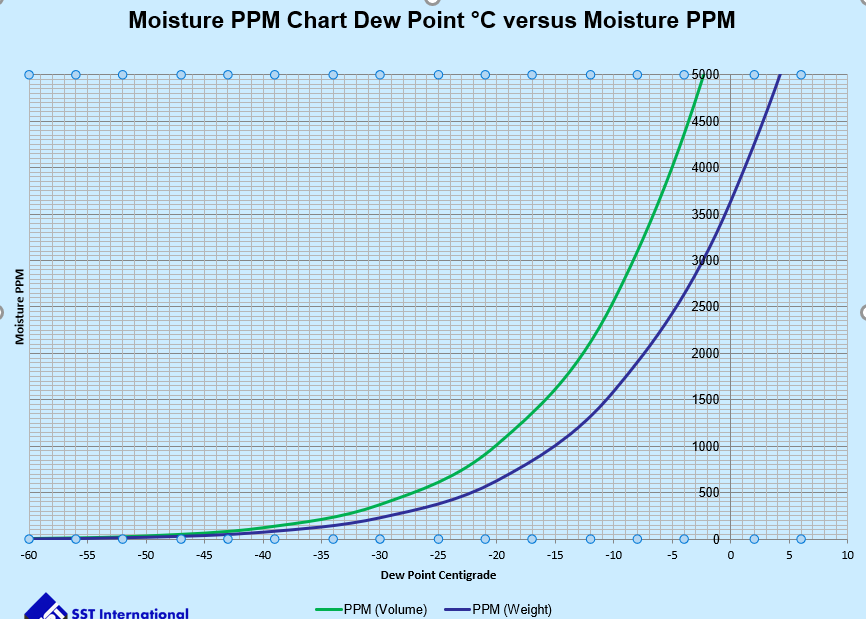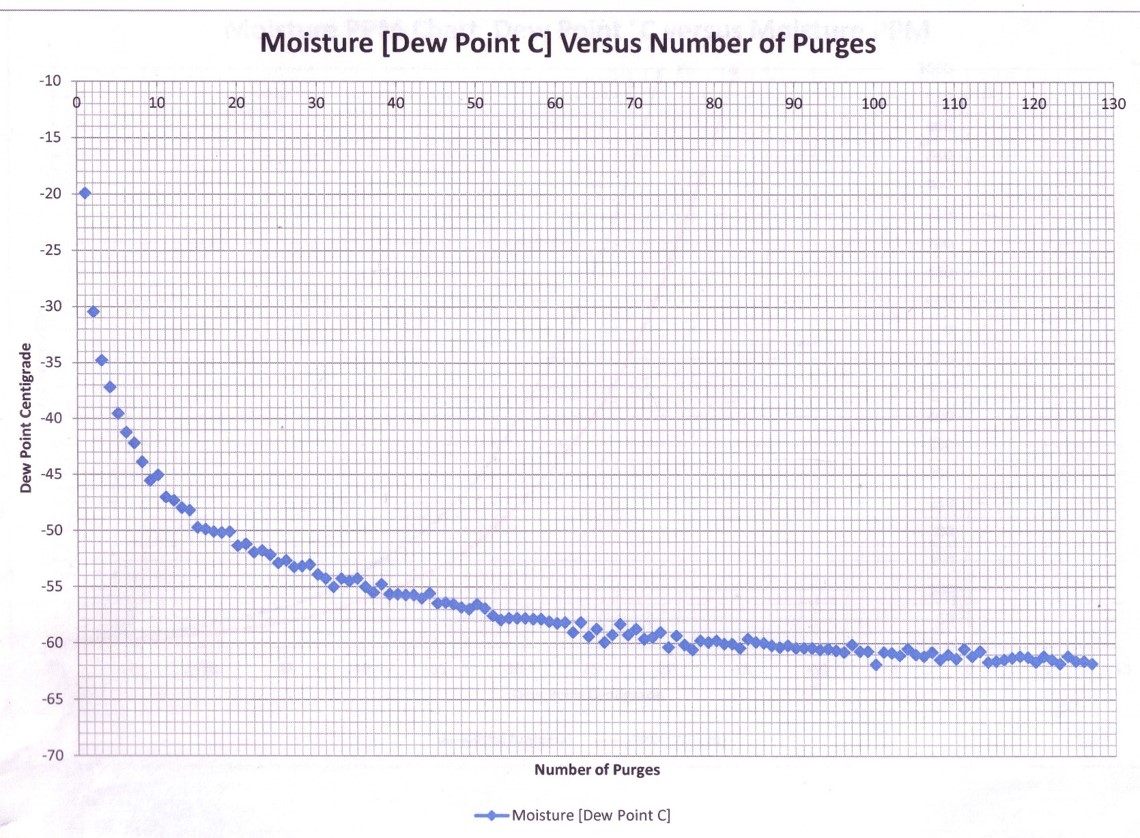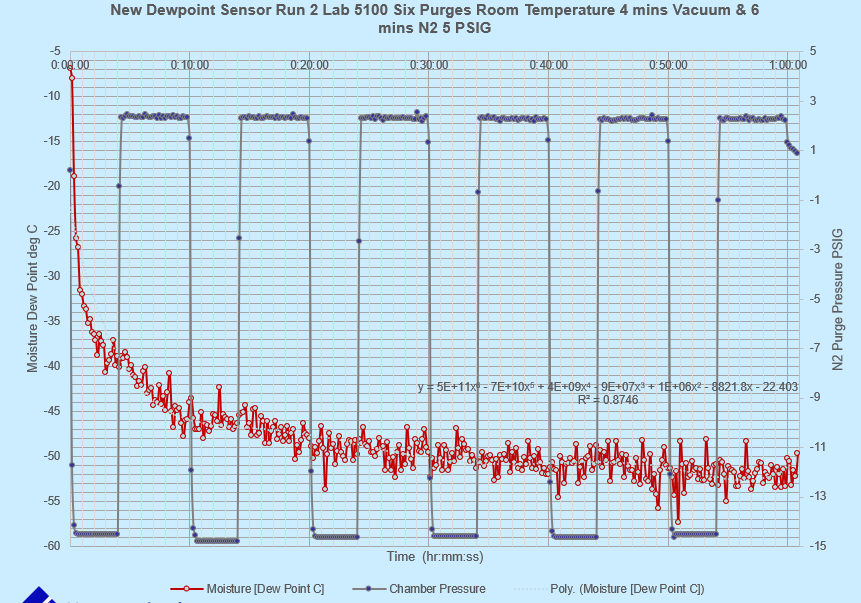Moisture on microelectronic components has a history of failure-inducing effects. These include electrical leakage, corrosion of metal surfaces, device instability or lower performance of the device, lowering of vacuum level in sealed packages, and stiction in MEMS devices. The "Why Three Monolayers of Moisture Are Important" technical paper refers to one to three monolayers of moisture, or about 8 angstroms of layer thickness, to be sufficient for electrical conduction.
The current standard or specification Mil STD 883 Method 1018 sets the threshold to 5000 ppm by volume as the limit for acceptance. This is typically measured in dew point as the output of a moisture sensor--the conversion is shown below.

The graph above shows that the dew point required must be lower than -3°C to meet the 5000 ppm(V) minimum threshold where a lower value would be necessary to compensate for outgassing of moisture from the components, materials, and package.
To implement lowering the background moisture level in our chambers, a moisture sensor was used on two SST standard models, the 3130 and the 5100 Vacuum Pressure Furnaces. The practical method to reduce the moisture level is with additional purges prior to the reflow operation. A purge consists of a vacuum followed by a nitrogen gas burst and/or continuous flow, and then a return to vacuum. Incorporating these additional purges at the beginning of a profile is an easy implementation on our equipment. Of course, this assumes dry nitrogen gas is supplied to the equipment by the customer. Below is the plotted results of a moisture sensor used on a 3130 Vacuum Pressure Furnace.

A moisture sensor was also used on a 5100 Vacuum Pressure Furnace and the results are plotted below.
As shown, adding additional long purges greatly reduce the background moisture levels in the equipment chambers, allowing customers to target a conservatively low moisture level by simply adding long purges to their reflow profiles.
Download these resources for more information:
| Model 3130 | Model 5100 | High Vacuum MEMS Packaging |
 |
 |
 |
(Reference: “Why Three Monolayers of Moisture Are Important”, Tom Greene and Bob Lowry White Paper)
---
Zap (Pierino) Zappella
Process Development Engineer
SST Vacuum Reflow Systems